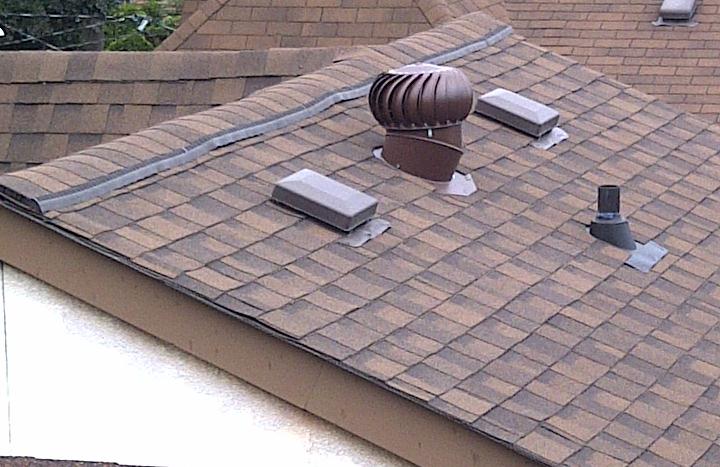Good attic and roof ventilation lowers cooling bills, extends shingle life and reduces moisture in the winter that can adversely affect the integrity of your roof deck.
When we mention that a roof should breathe, typically we are usually referring to the ventilation system beneath the roof deck.
Most shingle warranties require proper ventilation — as much as one square foot of net free ventilation area for each 150 square feet of floor space to be vented or one square foot per 300 square feet when both ridge and soffit ventilators are used.
An effective ventilation system will help:
- Reduce attic heat buildup
- Reduce attic moisture and condensation
Adequate roof ventilation reduces cooling bills, extends shingle life, and prevents roof rot.
Roof and attic vents protect your house from unneeded future repairs.
In the summer, good attic ventilation reduces heat buildup. That cuts cooling costs and prolongs shingle life.
In the winter, warm, moist air seeps into the attic from the living space below. Good ventilation allows the heat and moisture to escape. That keeps your attic dry and reduces ice dams (… mostly in the frozen north and every 10 years here in the Great State !~)
Look at your eaves and roof. If you don’t see any attic vents on the roof or in the eaves, you may want to consider calling us to help you evaluate the need to update and help enhance your property and the function of your structure.
Your roof may have a ridge vent, which is our preferred continuous roof air vent running along the peak of the roof. Or it may have traditional turbine vents or low profile turtle vents.

